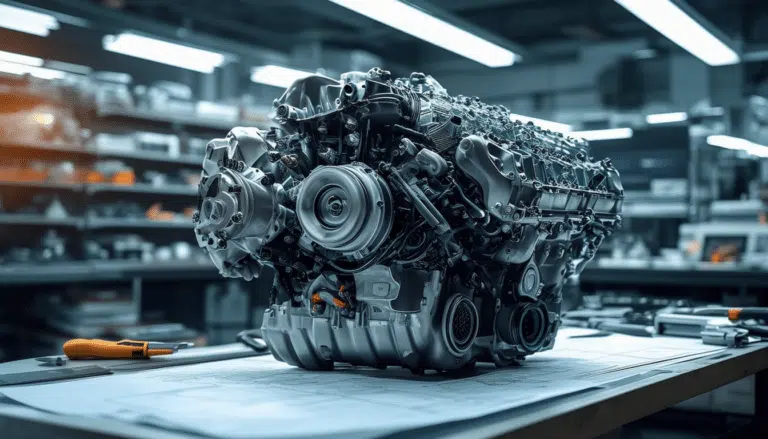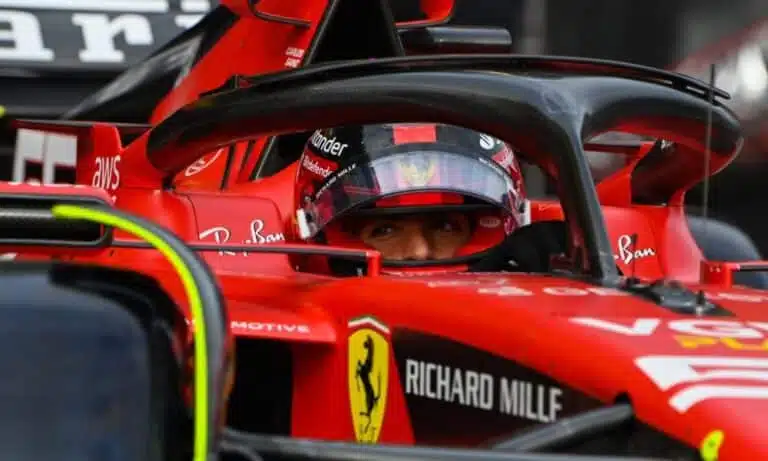After 34 years, the iconic engine that transformed Volkswagen says goodbye forever
Since its presentation at the Geneva Motor Show in 1991, the VR6 engine from Volkswagen has left an indelible mark on the automotive industry, transforming not only the brand but also the perception of what power and compactness mean in a car. With a revolutionary design that competed with the engines of its time and that still resonates today with automotive enthusiasts, this engine bids farewell after 34 years of history. A goodbye that leaves behind a legacy of innovation and performance that will not be easily forgotten.
In an era dominated by technological innovations and regulatory changes in the automotive industry, the VR6 engine from Volkswagen says goodbye, after more than three decades of revolutionizing the world of cars. This engine, famous for its compact design and high performance capability, left a lasting legacy in iconic models such as the Volkswagen Golf and other members of the group. However, due to new emissions regulations and downsizing trends, the VR6 has reached its end.
The Birth of a Legend at the Geneva Motor Show
In 1991, the Geneva Motor Show became the stage for an innovative presentation: the VR6 engine from Volkswagen. It arrived as a revolutionary response to market needs, offering power comparable to larger engines, but with a much more compact design. Initially mounted in the third generation Volkswagen Golf, the VR6 completely transformed the driving experience of these vehicles.
A Revolutionary Design
The VR6 engine was characterized by its unique structure, making it as compact as a four-cylinder engine. The key to its design was the narrow angle, of a maximum of 15 degrees, between its cylinder banks, in addition to having a single cylinder head. This not only made the engine more compact but also simpler to manufacture, providing an impressive power output of 174 HP without the need for a turbo.
The Golden Era of the VR6
During the first decade of the 21st century, the VR6 reached its peak popularity. It powered cars from various brands within the Volkswagen group, including iconic models like the Volkswagen Passat and the popular Volkswagen Golf R32, where it became a true icon. With displacements that reached over three liters and power outputs of up to 300 HP, the VR6 marked an era of high performance in the automotive sector.
The Twilight of the VR6: Downsizing and Emissions Regulations
As the years progressed, strict emissions regulations and the trend of downsizing meant that the VR6 began to be replaced by smaller, more efficient engines. Turbocharged four-cylinder engines, with reduced consumption and optimal performance, started to take the place of the VR6. Despite its unmatched sound and character, models like the Volkswagen Golf R20 marked the beginning of the decline of the VR6.
The End of an Era
Although it survived longer in vehicles such as the Porsche Cayenne and the Volkswagen Touareg, the VR6 engine faced its death sentence in the middle of the last decade. However, in markets like China and the United States, the VR6 continued its legacy in models like the Volkswagen Atlas, until in December 2023, its definitive cessation of production was confirmed.
The Legacy of a Giant
The VR6 engine was not just a powerful engine; it was a symbol of innovation and performance. While some mourn its disappearance, the legacy of the VR6 endures in those models that defined an era in the history of Volkswagen. In a world that looks towards electric engines and efficiency, the VR6 will always be remembered as a pioneer that transformed the automotive landscape.
A Look Toward the Future
Volkswagen is now focusing its efforts on adapting to new norms and technological trends. With the retirement of the iconic VR6, the company is moving towards a more efficient and environmentally-friendly future, staying at the forefront of automotive innovation. To learn more about the latest trends in the industry, visit automotores-rev.com.
The Goodbye to an Era of Ingenuity and Power
After more than three decades of service, the VR6 engine from Volkswagen retires, marking the end of an era in which automotive engineering reached unprecedented levels of innovation and excellence. First presented at the Geneva Motor Show in 1991, this engine has been a central element in some of Volkswagen’s most iconic cars, including models from its subsidiaries such as Audi and Porsche. With its compact design, surprisingly efficient in space, the VR6 proved to be a masterpiece of engineering.
The VR6 was designed at a time when internal combustion engines were the norm and fiercely competed by offering unmatched power. Without the need for forced induction, its ability to reach up to 174 HP from its initial 2.8-liter version was a clear demonstration of what German technology could achieve. Over the years, the engine evolved, adapting and increasing its performance to reach up to 300 HP.
However, the automotive world has changed dramatically since those golden days. With the global emphasis on sustainability and energy efficiency, the industry has shifted towards cleaner technologies. Emissions regulations, along with the phenomenon of downsizing, were decisive elements that led to the decline of the VR6. This transition to turbocharged four-cylinder engines, while efficient, represents a significant loss of the distinctive character that the VR6 embodied.
The retirement of the VR6 engine is not only a farewell to an advanced piece of machinery but also the end of an extraordinary era in which the sound and visceral feeling of driving a Volkswagen equipped with a VR6 were unparalleled. The legacy of this engine, however, will continue to live in the hearts of automotive enthusiasts, recognized as a lasting symbol of innovation and technical excellence that transformed the identity of Volkswagen and left an indelible mark on automotive history.



